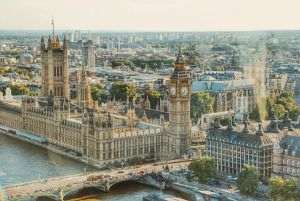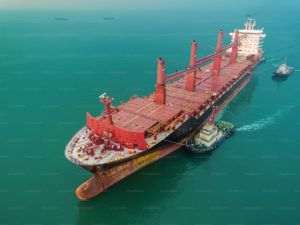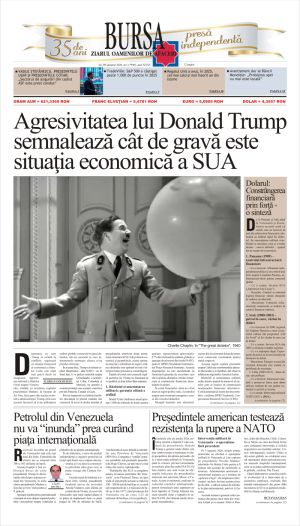The Bretton Woods moment has left a mark in politics. The conference which was held in New Hampshire, United States, 75 years ago, has represented a first globalization exercise, in which 44 states have participated, the effort of structuring the world economic order which came as the result of the Allies' victory in WW2.
Bretton Woods was coming, at the time, after the failed efforts of American president Woodrow Wilson to orchestrate a first diplomatic concert in Europe, as the peace he negotiated at the end of WW1 was rejected by the American congress, with devastating consequences for Europe.
The fundamental force of economic organization of the 1920s was the American dollar, meaning that the countries which would engage in austerity programs (which concerned the disarming of the combatants of WW1) and using gold as a currency, would benefit from dollar-denominated loans from the Wall Street banks. The economic crash of 1929 broke up this capital flow which had up until then moored the stability of the system.
"The counter-reaction" of the 1930s to the hegemony of the North-American continent "forced" the United States to become a military hyperpower, during and after the end of WW2 (see insert 1) and to draw up a so-called "economic antidote" to the adversarial reactions that arose after the failure of president Wilson.
During WW2, the Department of the US Treasury, at the same time led by secretary Henry Morgenthau Jr., and a large portion of the State Department had committed to design an international economic order which gained life in the Bretton Woods conference.
In the meeting which was held between July 1st and July 22nd 1944, just a few weeks from the Allied invasion in Normandy and Operation Bagration, a system was planned which stipulated a fixed exchange rate, pegged to gold, of 35 dollars an ounce, a fixed exchange rate of the currencies of the participating countries, pegged to the dollar, restricted capital flows and the creation of international institutions that would ensure the implementation of the rules (the International Monetary Fund, the World Bank).
One of the main ideas of the Bretton Woods system was that the international order required an economic foundation, says Adam Tooze, history professor at Columbia University.
He also says that currently, the collective memory of the political, economic and media representatives, regardless of ideology, sees the New Hampshire event which happened 75 years ago as the "Bretton Woods spirit" and argues that the revival of that spirit is necessary in the present troubled times, as well as of the international institutions such as the International Monetary Fund (IMF) and the World Bank to preserve peace and trade or progressive policies.
This in the context where a consultation of history shows that the Bretton Woods didn't work in the initial years since its inception, quite the opposite, the initial form of the order failed relatively quickly.
For instance, the Marshall Plan is often mistaken for the Bretton Woods system, even though the Plan represented the band-aid applied to the European economies, in 1947, when it became clear that the Morgenthau Plan, which was aimed at the deindustrialization of Germany, did not represent a long term solution.
George Marshall, the diplomat the plan was named after, was the US State Secretary, the institution which took over the management of the European reconstruction project from the US Treasury Department, implementing a pro-growth industrial policy, a rather interventionist one (which involves a massive involvement of the state in the economy) rather than based on market economy.
The Marshall Plan applied only to a relatively low geographic area, the Western European one, without being a global solution, a context in which Bretton Woods rather became an integral part of the West's strategy against the Soviet Union.
It is assumed that the Marshall Plan was drawn up prior to the Cold War, in other words prior to the tensions between the West and the Soviet Union, when in fact, the order which the Marshall Plan, drawn up in 1947, involved, leads to the escalation of the post-war tensions.
Essentially, Tooze argues, at the level of the world order, the collapse of the Morgenthau plan has represented a moment of failure for Bretton Woods, a system which nevertheless began working starting with 1948, with free movement of capital, but which towards the end of the 1960s led to growing pressure on the system.
Bretton Woods led to the increase of the foreign currency reserves denominated in dollars, in the countries which were the members of the system, money which the US had to pay for in gold.
The foreign governments ended up holding more dollars than the gold held by the Central Bank of the US and as a result, the American state had to print more dollars to preserve the liquidity needed for international trade. The foreign liabilities of the US exceeded its gold reserves in the 1960s, and in 1967 the British government ended up devaluing the pound, which led to an increased demand for gold. Two years later, several participants in the Bretton Woods system tried to buy back their dollars reserves which they owned. Together with the federal spending for the Vietnam war and the persistent deficit of the balance of payments, have led to the decision of American president Richard Nixon to cancel the dollar's convertibility to gold.
This led to the collapse of Bretton Woods and of the standard price of gold, of 35 dollars/ounce. From that moment on, fixed exchange rates of currencies disappeared and started fluctuating. "The Nixon shock", which is what the president's decision was named, led to the appearance of fiat money, meaning of money which has a fictional, conventional value.
Also, the severing of the connection between the dollar and gold led to a persistent, rampant inflation. This is where a new exercise in shaping up the international order began, namely the epic rate raising campaign by Federal Reserve chairman Paul Volcker, which led to what is often described as "the neoliberal period".
In fact, that period of rampant inflation led to changes in political discourse in countries such as the United States or Great Britain, as Ronald Reagan and Margaret Thatcher were elected in the 80s.
Last but not least, the collapse of the Soviet Union and of communism paved the way for the appearance of globalization and of the so-called liberal international order (and concepts such as the end of history), which had been in the planning ever since Bretton Woods.
In 1944-1945 an international trade organization was being planned (International Trade Organization) which would lead to globalization, but the project had been abandoned until 1950, as American Congress had opposed the plan. As a substitute, the GATT (General Agreement on Tarrifs and Trade) appeared, and the World Trade Organization (WTO), the institutional organization of globalization, only appeared in 1995, as China became a member on November 1st, 2001.
Amid the "triumph of the West" a new consolidated vision of globalization arose, of integrationist processes (NAFTA, EU, CSI, BRICS, etc) and of the original Bretton Woods multilateralism, which has expanded today beyond the institutional regime and became a "religion" that has even been adopted in China, whose president has been celebrated recently in Davos, in January 2017 (three days prior to the inauguration of president Donald Trump), as the savior of globalization and international order.
Over the last decades, as a matter of fact, China and emerging economies have proved the main beneficiaries of the order focused on globalization and free trade, hence the desire of Chinese president Xi Jingping to pose as a savior, despite the slow reforms.
At any rate, after the Cold War, the United States are losing control over their own invention, the globalized economy, and this leads to the expansion of the international forums such as G20, where, in times such as the 2008 financial crisis, they prove efficient in governing and turning around the global economy.
Presently, the exercising of that power by the United States, the gravitational center of this world order, finds itself in a moment of confusion under president Donald Trump. But structurally, the moment is similar to others that the United States have found themselves in when looking back at the exercising of their power in the world.
But the current moment stands out due to two structural causes, which are significant right now: China's evolution and the appearance of climate change.
If, where China is concerned, the United States can act unilaterally, proceeding to the destructuring of globalization, in the case of climate change, the US, as well as the rest of Europe, are simple spectators in a drama that can only be approached multilaterally.
In May 1940, president Franklin Delano Roosevelt launched a program to build 50,000 military aircraft. By February 1941, the number adjusts to 185,000, and by the end of the war, the US production increases to 300,000 planes.
-------------------------------------------
The agony that Donald Trump's protectionism has caused among "globalists" is symptomatic for a vision centered on Europe, and it is no surprise that the biggest pain is felt in Germany, says Adam Tooze, since among the German political elite, at least until recently, the United States have been seen as a benign ruler sitting at the center of a post-war order which has shaped Germany's recent history.
























































